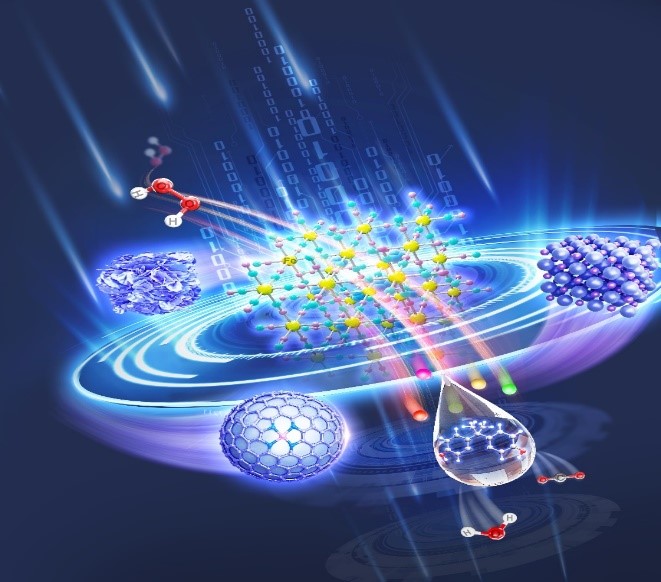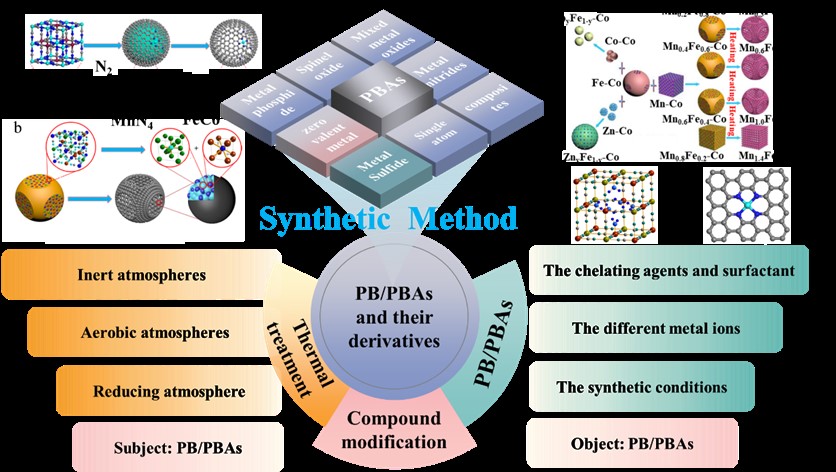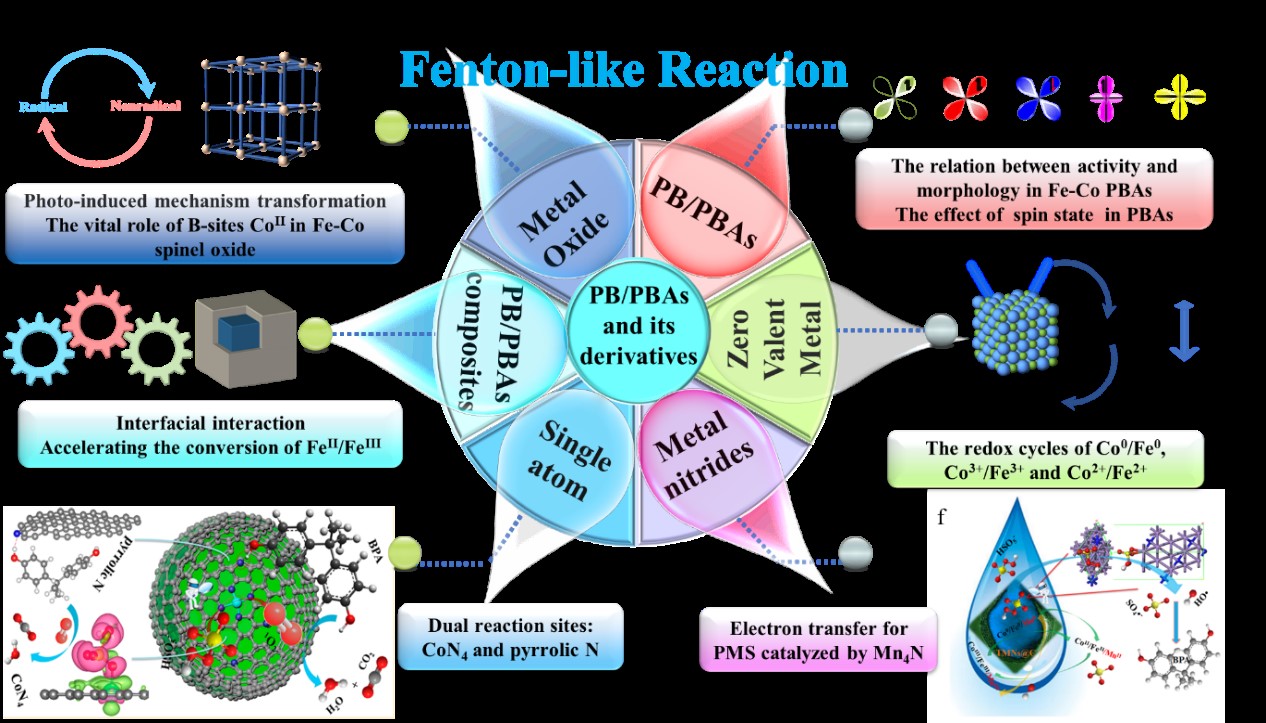Recently, we published a paper about the research progress in the Center on Prussian blue analogues and their derivatives as Fenton-like catalysts. We have summarized the synthesis and modification strategies of Prussian blue analogues and their derivatives, as well as the researches on their catalytic mechanisms for pollutant degradation in Fenton-like reactions. Furthermore, we have provided an outlook on the research and application prospects in this field.

As a typical metal-organic framework material, Prussian blue (PB) and its analogues (PBAs), composed of octahedral [M1(CN)6]3- anions bridged by M2 ions, have drawn wide attention due to their ordered pore structure, large specific surface area, and environmental friendliness. In 2015, we first synthesized PB/TiO2 as a photo-Fenton catalyst for the degradation of Rhodamine B with excellent activity. Subsequently, the developments and applications of PB/PBAs catalysts in Fenton-like reaction have been widely expanded and increasingly recognized. The developed synthesis strategies for PB/PBAs/PBDs are mainly as follow:
Synthesizing PBAs/PBDs with controllable morphologies and compositions by co-polymer-co-morphology method.
Synthesis of PBAs with specific exposed crystal faces by controlling the relative growth rates of secondary building units (SBUs) through adjusting temperature.
PB compositing with TiO2, MoS2, etc. to induce a synergistic effect.
Synthesis of single-atom catalysts for the first time using PBAs as precursors.

A series of PB/PBAs/PBDs as model catalysts have been prepared to elucidate the structure-activity relationships and catalytic mechanisms of PB/PBAs/PBDs in Fenton-like reactions.
The crucial role of catalyst microstructures in regulating activity and mechanism in Fenton-like reactions, such as primary exposed crystal facets, electronic spin states, and crystallographic sites, etc.
Elucidating the catalytic degradation mechanisms of organic pollutants over single-atom catalysts.
Enhancing the catalytic efficiency and modulating the reaction pathway of PBAs/PBDs in Fenton-like reactions by introducing external energy.
57Fe Mössbauer spectroscopy was proved as a highly efficient and sensitive technique for capturing chemical changes in iron sites within PB/PBAs/PBDs Fenton-like catalyts.

Last, we systematically outlined the development prospects and challenges of PB/PBAs/PBDs in Fenton-like reactions. Further efforts are needed to develop new synthesis and modification methods, establish more reliable in-situ/operando characterization techniques, and accurate theoretical simulation methods.
The paper "Prussian Blue Analogues and their Derivatives: From Elaborate Microstructure Design to Boosted Fenton-like Application" was published in the journal "Accounts of Materials Research." The first author, Dr. Zhang Liang, is a former doctoral student of the Center. This work was supported by grants from National Natural Science Foundation of China, and Chinese Academy of Sciences. (Text/Graphs by Dr. Zhang Liang)
Paper link: https://pubs.acs.org/doi/full/10.1021/accountsmr.3c00289